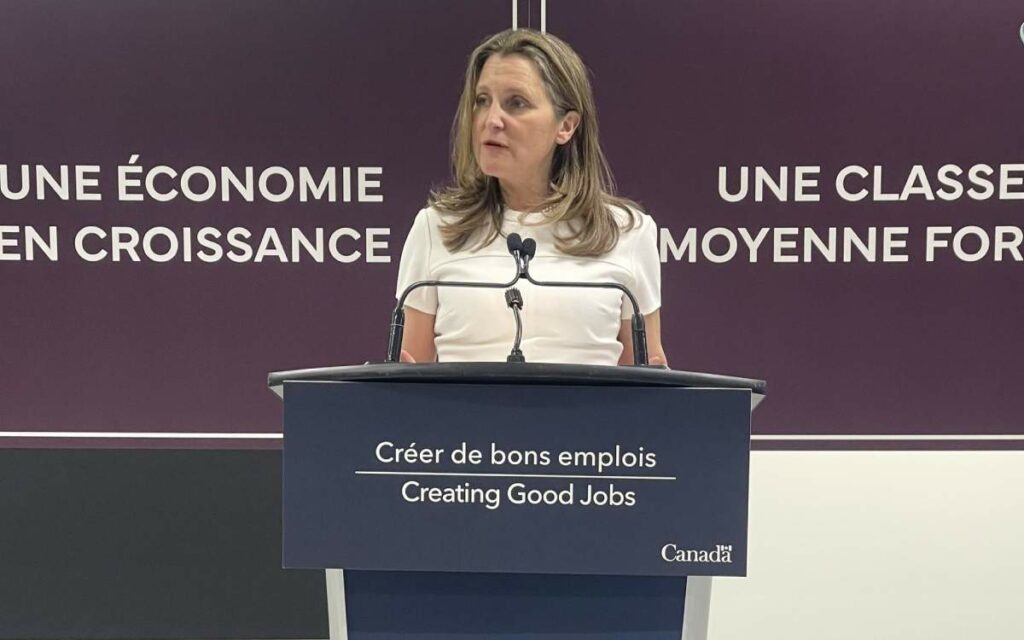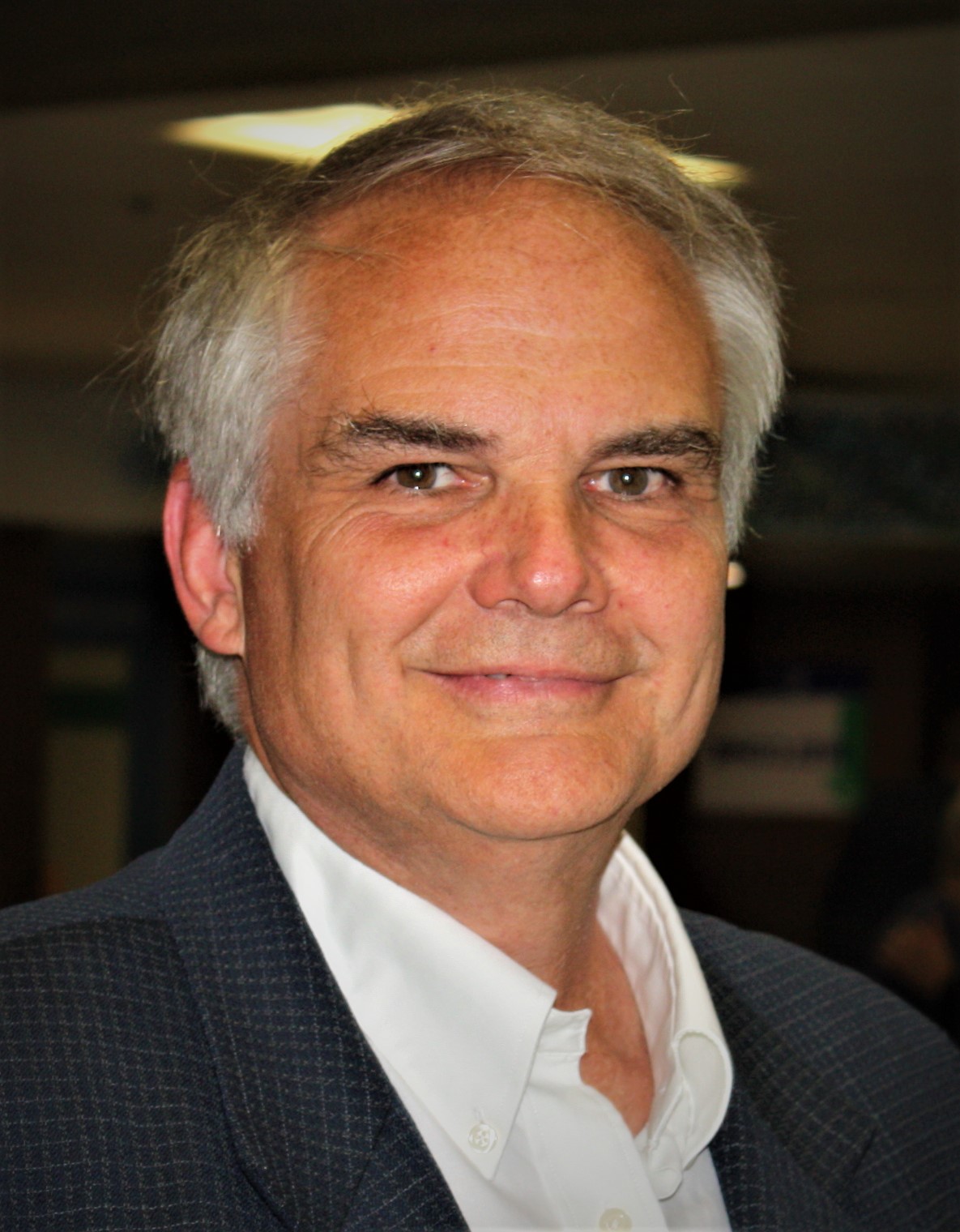
At no time in the recent history of our country has a budget been so important. Pictured is finance minister Chrystia Freeland. Photo credit: Twitter/Chrystia Freeland
Next Tuesday, March 28, federal finance minister Chrystia Freeland will rise in the House of Commons to deliver the 2023 Federal Budget. At no time in the recent history of our country has a budget been so important. Canadians are financially strained and lacking confidence in the federal government’s ability to manage the economy.
In the lead up to the budget, there has been a great deal of economic analysis and commentary on what needs to be in the document. This cursory preview provides a checklist of the key factors Canadians might hope to hear with Freeland’s budget address.
Just this week the international 2023 World Happiness Report was released, a country-by-country ranking of citizens’ impressions of their quality of life. For decades Canada has been in the top 10, in fact back in 2015 our country was ranked fifth in the world. Yet, in 2023, Canadians are not feeling “happy”, and the country has dropped to a miserable 13th.
Economic uncertainty and inflation have undoubtedly played a part in the erosion of satisfaction. Statistics Canada’s latest report revealed grocery prices are still rising at a rate of 10.6 per cent, marking the seventh consecutive month of double-digit increases. Grocery staples have risen at a shocking rate over the last three years: 25 per cent more for milk, 27 per cent more for eggs, 25 per cent more for white bread, 41 per cent more for butter, 23 per cent more for chicken thighs – and 54 per cent more for spaghetti.
In other StatsCan data, Canadians learned that 2022 was a horribilis annus for their pocketbook. Canadians’ household net worth took a tremendous hit while consumer prices rose on average 6.8 per cent, the biggest increase since 1982. In that year it was the economic policies of Pierre Trudeau’s government that resulted in both hyper-inflation and waning confidence in the economy.
Sadly, there are now more than one in three (35 per cent) Canadians having difficulty meeting their basic household expenses. We have become accustomed to reading headlines about rising personal debt and insolvencies, rising use of food banks – even Canadians skipping meals and students dumpster diving to make ends meet.
It is little wonder that last week’s Nanos Research survey data published in the Globe and Mail revealed the lowest ever “satisfaction” rating expressed by Canadians about their country. The Coalition for a Better Future has also found that half of the population (50 per cent) believe the country is heading in the wrong direction to sustain a high standard of living (younger Canadians aged 18 to 34 were even more pessimistic, with 58 per cent believing Canada is going in the wrong direction).
This is the current troubled state of the Canadian public that Chrystia Freeland must address.
The finance minister has indicated the 2023 budget will include “targeted inflation relief” to help financially struggling Canadians. She stated that the government will “exercise fiscal restraint” so as not to fuel further inflationary pressures. Freeland acknowledged this week that the federal government was no longer able to sustain the pandemic-era support programs, saying “The truth is, we can’t fully compensate every single Canadian for all of the effects of inflation or for elevated interest rates… Our ability to spend is not infinite.”
Going forward the government will target its financial support to lower-income individuals for specific cost-of-living expenses. Freeland stated, “For those Canadians who feel the bite of rising prices the most acutely, for our most vulnerable friends and neighbours, our government will deliver additional targeted inflation relief. This support will be narrowly focused and fiscally responsible.”
Freeland has already confirmed that the budget will include the $196 billion health care funding promised to provinces and territories, and the additional $2 billion in health transfers to address the crisis in hospitals, emergency rooms, and surgical medical centres.
She also confirmed that Canadians can expect new measures to encourage development and investment in green industries across the country. This could mean a smorgasbord of new green incentives, from money for energy efficiency upgrades to households and buildings to increased tax credits for electric vehicles.
Whatever else may be in Tuesday’s budget, Freeland is careful to check expectations of any gross spending on new programs. She summarized her budgetary work in this way, “What Canadians want right now is for inflation to come down and for interest rates to fall. And that is one of our primary goals in this year’s budget: not to pour fuel on the fire of inflation.”
This is a pivotal budget for the federal government, and both the Organization for Economic Cooperation and Development (OECD) and the Fraser Institute have recently provided important context for the finance minister to consider. First, the OECD warned the government needs a plan to lower the national debt. It also underlined that in recent years Canada’s GDP per capita has advanced more slowly than leading economies, and that there is a widening gap in levels of investment and productivity between Canada and United States.
The OECD’s outlook for Canada is not promising. It projected that growth in living standards in Canada would rank dead last among its 38 developed member-countries over the next 40 years, largely due to Canada’s unattractive balance sheet and lack of foreign investment.
In a series of editorials, the Fraser Institute has sounded a number of alarm bells about Canada’s economy. It suggests the priority must be newfound fiscal restraint. It points out that, since taking office in 2015, the Trudeau government has significantly increased spending year after year, exceeding its own spending forecasts in every instance. As a result, Canada’s federal debt in relation to its GDP has increased from 31.9 per cent in 2015 to 45.2 per cent in 2021.
The Fraser Institute is also critical of the country’s current economic growth strategy. The Trudeau government has employed a strategy of tax increases, large-scale spending increases to finance new and expanded programs, and an activist approach to economic development by selecting industry “winners and losers.” This has been detrimental to Canada’s economy: for example, between 2016 and 2019 there was an average GDP growth of 2.1 per cent, compared to 4.6 per cent in the years of 1997 to 2000.
Bottom line for the Fraser Institute: the government is bloated, consistently overspends, and has no confidence-boosting plans for the country’s economic growth. In a lead editorial it stated: “Simply put, the tax, spend, borrow and regulate economics of the Trudeau government… have not improved the economy or living standards of Canadians compared to previous regimes.”
A Checklist for the 2023 Federal Budget
Given suggestions from the best of Canada’s economic analysts and political pundits, here is a short checklist of what to watch for in Freeland’s budget address. These are factors that would set a clearer fiscal path forward for the government, and instill greater confidence in Canadians and in the country’s business community.
- Set a fiscal schedule that will balance the budget
- Lower overall government spending in this fiscal year
- Offset new spending on green program(s) with equivalent spending reductions elsewhere
- Provide instant tax relief for individuals: at minimum, defer April 1st increases for carbon tax at the pump and for home fuel, and the 6.3 per cent hike on alcohol taxes
- Provide measures to support businesses: no new taxes, push back repayment deadline for CEBA loans, introduce new business tax credits for investment and innovation
- Introduce trade and labour force measures to support industries in addressing productivity challenges
- Increase defence spending: raise current spending of 1.29 per cent of GDP close to NATO target of 2.0 per cent
- Maintain the GST/HST at 5 per cent (there is a nasty rumour it might return to 7 per cent)
The last word goes to renowned economist Milton Friedman, whose counsel was echoed in a recent Fraser Institute editorial. Assuredly, Friedman would tell Canadians: “Keep your eye on one thing, and one thing only: how much government is spending, because that’s the true tax… If you’re not paying for it in the form of explicit taxes, you’re paying for it indirectly in the form of inflation or in the form of borrowing.”

Chris George is an advocate, government relations advisor, and writer/copy editor. As president of a public relations firm established in 1994, Chris provides discreet counsel, tactical advice and management skills to CEOs/Presidents, Boards of Directors and senior executive teams in executing public and government relations campaigns and managing issues. Prior to this PR/GR career, Chris spent seven years on Parliament Hill on staffs of Cabinet Ministers and MPs. He has served in senior campaign positions for electoral and advocacy campaigns at every level of government. Today, Chris resides in Almonte, Ontario where he and his wife manage www.cgacommunications.com. Contact Chris at chrisg.george@gmail.com.




















